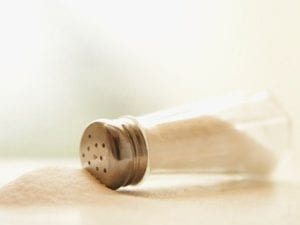 What if it were possible to lose weight and enjoy fewer symptoms of diabetes simply by participating in a program designed to encourage you to improve your overall lifestyle choices? A recent study suggests it may be a bigger help than anyone previously thought.
What if it were possible to lose weight and enjoy fewer symptoms of diabetes simply by participating in a program designed to encourage you to improve your overall lifestyle choices? A recent study suggests it may be a bigger help than anyone previously thought.
According to the American Diabetes Association (ADA), “A community-based lifestyle intervention program, modeled after one used in a landmark government funded diabetes-prevention study, can help participants in a group setting achieve weight loss and blood glucose reductions comparable to those achieved with individual counseling from health professionals.”
In the other words if a program administered by lay personnel could be just as effective at helping those with diabetes attain a better balance in weight as working with a paid professional for the same services.
The ADA said, “In the Healthy Living Partnerships to Prevent Diabetes (HELP PD) study, participants were divided into two groups: a lifestyle weight loss group, which received six months of weekly behavioral weight loss sessions in a group setting, followed by monthly follow-up meetings, at which they were encouraged to change eating behaviors and exercise up to 180 minutes per week; and a usual care group, which received two visits with a dietitian and a quarterly newsletter with tips for lifestyle changes. The group weight loss sessions were delivered by lay community health workers trained and supervised by dietitians.”
So, how significant were the overall results? The ADA advises, “The study found that those in the lifestyle intervention group achieved and maintained significantly greater weight loss (an average of 7.3 percent of body weight) than those in the regular care group (who achieved an average loss of just 1.3 percent of body weight) after 12 months. The lifestyle intervention group also reduced blood glucose levels by an average of over 4 mg/dl, from 105.8 mg/dl to 101.2 mg/dl, after 12 months, compared to an average drop of less than 2 mg/dl (to 104 mg/dl) for the regular care group. The results for the lifestyle group mirrored those achieved over three years by participants in the landmark National Institutes of Health-sponsored Diabetes Prevention Program, in which individuals with glucose levels in the pre-diabetic range were able to reverse the course of their disease by losing 5-7 percent of body weight and exercising 150 minutes per week, in addition to receiving individual counseling sessions with trained behaviorists. In the Diabetes Prevention Program, the weight loss program led to a 58 percent reduction in the development of diabetes, from about 11 percent a year to about 5 percent a year.”
“Study participants will be followed for an additional five years to see whether individuals can maintain weight loss and blood glucose reductions independently, or if they need continued group counseling to do so. The study is being funded by the National Institute of Diabetes and Digestive and Kidney Diseases,” said the ADA report.
Since diabetes and depression often go hand in hand it may be helpful both physically and emotionally to embrace a support group designed to encourage many diabetics to make positive changes today that will have an impact in the future.

 In the same way asthmatics use rescue
In the same way asthmatics use rescue  The Centers for Disease Control (CDC) suggests that a better understanding of what prediabetes is could help prevent the expansion of diabetes. Knowing what leads to diabetes can be a powerful tool of disease avoidance.
The Centers for Disease Control (CDC) suggests that a better understanding of what prediabetes is could help prevent the expansion of diabetes. Knowing what leads to diabetes can be a powerful tool of disease avoidance. Table salt has been linked to
Table salt has been linked to  Ingredients
Ingredients